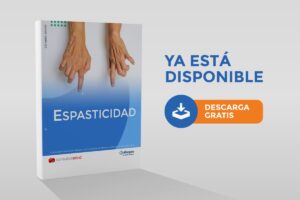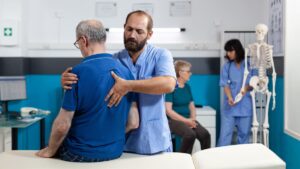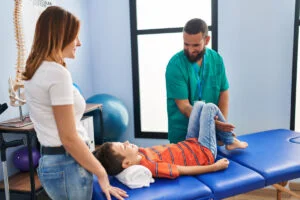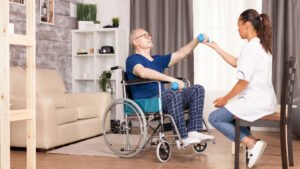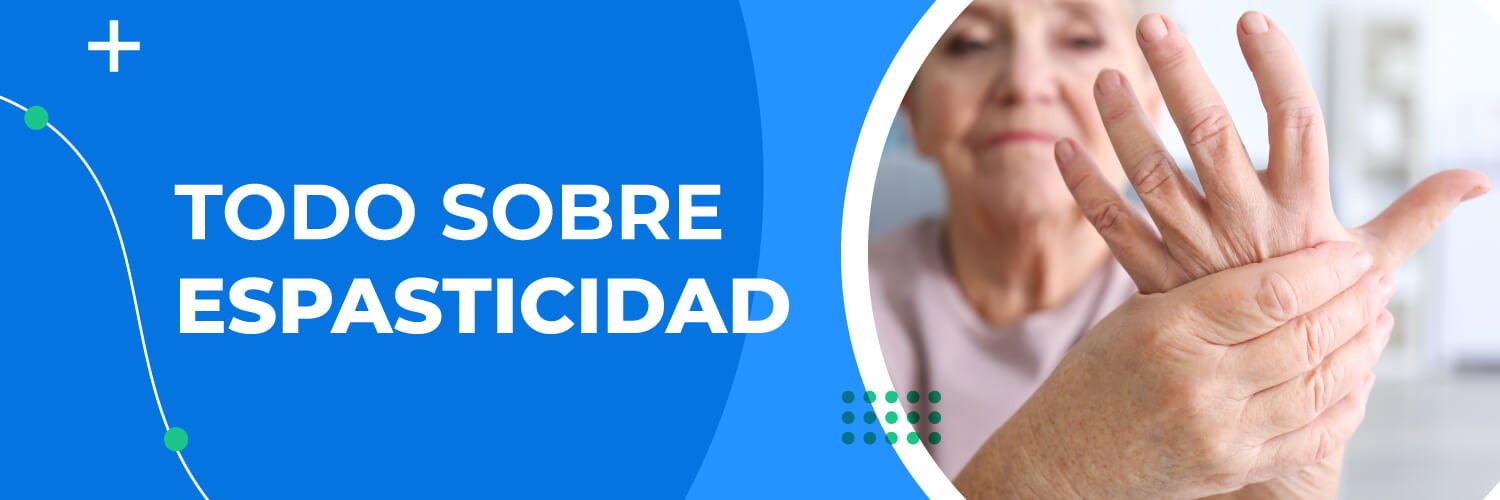
ESPASTICIDAD
PROGRAMA DE SENSIBILIZACIÓN
Conozca todo sobre este signo clínico, su diagnóstico, tratamiento y control.
La espasticidad es un signo clínico que no tiene edad, puede presentarse en niños, jóvenes y adultos. A menudo es una consecuencia de enfermedades neurodegenerativas; discapacidades congénitas o adquiridas, pero también es un síntoma importante en varías
patologías.
Sin embargo, la información que se difunde sobre la espasticidad es limitada o de difícil acceso para los actores de los sistemas sanitarios.
Este recurso busca elevar el conocimiento sobre la espasticidad como trastorno del sistema nervioso y generar un impacto positivo en el bienestar de los pacientes.
La primera temporada del programa de sensibilización sobre la espasticidad tendrá nuevos contenidos hasta diciembre de 2022.
Sin embargo, la información que se difunde sobre la espasticidad es limitada o de difícil acceso para los actores de los sistemas sanitarios.
Este recurso busca elevar el conocimiento sobre la espasticidad como trastorno del sistema nervioso y generar un impacto positivo en el bienestar de los pacientes.
La primera temporada del programa de sensibilización sobre la espasticidad tendrá nuevos contenidos hasta diciembre de 2022.
Referencias Bibliográficas de los contenidos
- ¿Qué es la espasticidad?, 2014. Encontrado en: Clic para ver sitio web
- M.P. Sáinz-Pelayo, S. Albu, N. Murillo, J. Benito-Penalva, Espasticidad en la patología neurológica. Actualización sobre mecanismos fisiopatológicos, avances en el diagnóstico y tratamiento, 2020. Encontrado en: Clic para ver sitio web
- Balakrishnan S, Ward AB. The diagnosis and management of adults with spasticity. Handb Clin Neurol 2013; 110: 145-60. Citado en: clic para ver sitio web
- Dressler, D., Bhidayasiri, R., Bohlega, S. et al. Defining spasticity: a new approach considering current movement disorders terminology and botulinum toxin therapy. J Neurol 265, 856–862 (2018). Encontrado en: clic para ver sitio web
- Reed B. The physiology of neuromuscular electrical stimulation. Pediatric Physical Therapy 1997; 9: 96. – Blanchette AK, Demers M, Woo K, Shah A, Solomon JM, Mullick AA, Levin MF. Current Practices of Physical and Occupational Therapists Regarding Spasticity Assessment and Treatment. Physiother Can. 2017;69(4):303-312. doi: 10.3138/ptc.2016-54. PMID: 30369697; PMCID: PMC5754181. Encontrado en: clic para ver sitio web
- F. Vivancos-Matellano, S.I. Pascual-Pascual, J. Nardi-Vilardaga, F. Miquel-Rodríguez et. Al. Guía del tratamiento integral de la espasticidad. Encontrado en: clic para ver sitio web
- Barenys, R., Macias, L., Manzanas, A. Uso de las férulas, splints y ortesis para las extremidades inferiores. Revisión de la literatura sobre la eficacia en niños con trastornos neurológicos. Encontrado en: clic para ver sitio web
- Murillo N, Kumru H, Vidal-Samso J, Benito J, Medina J, Navarro X, et al. Decrease of spasticity with muscle vibration in patients with spinal cord injury. Clin Neurophysiol 2011; 122: 1183-9
- Yong LY, Wong CHL, Gaston M, Lam WL. The role of selective peripheral neuretomy in the treatment of uppers limb spasticity. J Hand Surg Asian Pac Vol 2018; 23: 181-91
- Esquenazi, A. Recomendaciones de manejo integral de la espasticidad en adultos: Consenso Latinoamericano de Especialistas. 2011. Encontrado en: clic para ver sitio web
- Gómez-Vega, Juan Carlos; Ocampo-Navia, Maria Isabel and Acevedo-Gonzalez, Juan Carlos. Espasticidad. Univ. Med. [online]. 2021, vol.62, n.1. Clic para ver sitio web
- Espasticidad, Medline Plus - Biblioteca Nacional de Medicina (NIH). Clic para ver sitio web
- American Association of Neurological Surgeons. ‘Spasticity’. Clic para ver sitio web
- Chang E, Ghosh N, Yanni D, Lee S, Alexandru D, Mozaffar T. A Review of Spasticity Treatments: Pharmacological and Interventional Approaches. Crit Rev Phys Rehabil Med. 2013;25(1-2):11-22. doi: 10.1615/CritRevPhysRehabilMed.2013007945. PMID: 25750484; PMCID: PMC4349402 Clic para ver sitio web
- Hoare BJ, Wallen MA, Imms C, Villanueva E, Rawicki HB, Carey L. Botulinum toxin A as an adjunct to treatment in the management of the upper limb in children with spastic cerebral palsy (UPDATE) Cochrane Database Syst Rev. 2010;(1):CD003469 Clic para ver sitio web
- Minnis G. Ask the Expert: How Can Physical Therapy Help Spasticity? (2022) Clic para ver sitio web
- K. Milinis, C. A. Young & on behalf of the Trajectories of Outcome in Neurological Conditions (TONiC) study (2016) Systematic review of the influence of spasticity on quality of life in adults with chronic neurological conditions, Disability and Rehabilitation, 38:15, 1431-1441, DOI: 10.3109/09638288.2015.1106592
- Quiñones Aguilar Sandra, Paz Claudia, Delgado César,Jiménez Gil Francisco Javier, Espasticidad en adultos, Revista Mexicana de Neurociencia Marzo-Abril, 2009; 10(2): 112-121. Clic para ver sitio web
- Jörg Wissel , Ganesh Bavikatte , María Matilde de Mello Sposito, Alessandro Picelli , Paul Winston , Susana Moraleda Pérez , Raquel Cutillas Ruiz , Lourdes López de Munain , Aleks Zuzek, Adaptación española de riesgos de la espasticidad postictus: Congreso de la Sociedad Española de Rehabilitación y Medicina Física (SERMEF) 11-13 noviembre (2020).
- Iñiguez, Itzel. Educación Inclusiva. Clic para ver sitio web
- s.scale-library.com/resultado_escala.php?echelle=Escala de Ashworth Modificada&theme=&type=&scalage=adulte&retour=liste&cle=&echelle_box=Escala de Tardieu
- Gómez-Soriano J, Cano-de la Cuerda R, Muñoz-Hellín E, Ortiz-Gutiérrez R, Taylor JS. Valoración y cuantificación de la espasticidad: revisión de los métodos clínicos, biomecánicos y neurofisiológicos. Rev Neurol 2012;55 (04):217-226. DOI: 10.33588/rn.5504.2012229
- Bhimani R, Anderson L. Clinical understanding of spasticity: implications for practice. Rehabil Res Pract. 2014;2014:279175. doi: 10.1155/2014/279175. Epub 2014 Sep 4. PMID: 25276432; PMCID: PMC4168242.
- Sandy Ayoub, Jared G. Smith, Isabel Cary, Catherine Dalton, Aimee Pinto, Claire Ward, Alessia Saverino. (2021) The positive and the negative impacts of spasticity in patients with long-term neurological conditions: an observational study. Disability and Rehabilitation 43:23, pages 3357-3364.Clic para ver sitio web
- Tibbett. (2017). Spasticity and Pain After Spinal Cord Injury: Relationships to Physiological, Functional, and Quality of Life Measures [University of Miami]. Clic para ver el sitio web
- Shilt JS, Seibert PS, Kadyan V. Optimal management for people with severe spasticity. Degener Neurol Neuromuscul Dis. 2012 Oct 3;2:133-140. doi: 10.2147/DNND.S16630. PMID: 30890884; PMCID: PMC6065570.
- Barnes M DISABILITY AND REHABILITATION, 2016 Clic para ver el sitio web
- Milte, R., Ratcliffe, J., Ada, L. et al. Protocol for the economic evaluation of the InTENSE program for rehabilitation of chronic upper limb spasticity. BMC Health Serv Res 20, 478 (2020) Clic para ver el sitio web
- ARROYAVE LOAIZA, Gilma et al. Coste-beneficio del tratamiento farmacológico de la parálisis cerebral con espasticidad en México. Rev. Esp. Salud Publica [online]. 2000, vol.74, n.5-6 [citado 2022-11-17], pp.00-00. Clic para ver el sitio web
